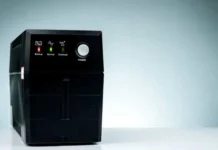Around one in three adults in the U.S. haven’t seen a dentist in at least 12 months. This was also the case even before the pandemic! Lack of dental health insurance and accessibility make it difficult for many to receive the oral care they need.
You shouldn’t feel ashamed if you need orthodontic treatment and don’t have a clue what that means. You also shouldn’t worry if you don’t know what your options are and their benefits because you are not alone.
Your dentist is the best person to ask for advice about orthodontic treatments and their prices. But if you want to educate yourself first, this simple beginner’s guide will give you a good foundation of knowledge.
What Is Orthodontic Treatment?
Orthodontic treatment is the use of appliances to correct the position of one or more teeth. These tend to be braces or aligners that you wear on your teeth for an extended period. Every few weeks or months, an orthodontist or dentist will need to adjust the braces or aligners.
Early orthodontic treatment in children can be beneficial to stop more severe dental problems in later life. But more and more adults are also seeking improved smiles and/or a more comfortable bite.
Reasons To Need Orthodontic Treatment
There are two main reasons why you might want or need orthodontic treatment. The first is for cosmetic/appearance reasons. The second is to correct issues with the current positioning of your teeth.
These are the most common orthodontic problems that you might have:
- Excessive spacing = too many noticeable gaps between teeth
- Crowding = lack of space for the number of teeth
- Abnormal eruption = tooth emerges in the wrong place of the gum
- Open bite = both sets of front teeth do not meet
- Overjet/Protrusion = upper front teeth stick out over the lower teeth
- Overbite = upper teeth overlap the lower teeth
- Crossbite = both sets of teeth do not line up when closed
- Underbite = lower teeth overlap the upper teeth
It’s possible to have one or more of these issues at once. For example, you may have an overbite in your front teeth and a crossbite in your back teeth.
The extent of your issues will determine how long you need to wear braces and the types of braces you might need to wear. In certain circumstances, you may need to wear one type of brace before switching to another.
Tooth Extraction
If you have crowding in your teeth or an incorrect bite as a result of crowding, your dentist might suggest removing teeth. This is because your other teeth need space to move into a better position when you start orthodontic treatment. Dentists will often remove premolars in the middle of your sets of teeth because they are the most inconsequential.
Dentists use a local anesthetic to numb the nerves in your gum and tooth. You will still be awake and will feel the pressure of the procedure but you will not feel the pain.
Recovery from a tooth extraction takes anywhere from 24 hours to a few days. You will need to take it easy during this time and follow your dentist’s aftercare guidelines.
Different Types of Braces Available
Once your orthodontist diagnoses your misalignment, they will suggest treatment options. There are many different types of braces available, including:
- Metal braces
- Ceramic braces
- Self-ligating braces
- Lingual braces
- Clear aligners
Metal braces are the most common type of braces. They involve small pieces of metal that the orthodontist will fuse to your teeth and join up with a wire. They are very noticeable and you will need to revisit the orthodontist every few weeks to get them tightened.
These are the best type of braces for most misalignments.
Ceramic braces are like metal braces but they are more discreet in appearance because they are white in color. Lingual braces are metal braces that the dentist fixes to the back of your teeth so they are not as visible. Only a few orthodontists offer this as an option nowadays because other discreet options are more popular.
Self-ligating braces are like wired braces but they are easier to adjust. These braces are perfect for people who are unable to sit for long hours in a dental chair.
Clear aligners are removable, discreet braces that are popular with adults. But if your dentist removed teeth to fix your misalignment, clear aligners might not be an option until further in your treatment.
Most dentists like TDR Orthodontics cater to the requirements of both child and adult teeth. They offer new technology like clear aligners as well as traditional wired braces.
Caring for Your Teeth With Braces
It’s difficult to care for your teeth while wearing braces. Flossing is impossible and you won’t be able to reach all parts of your tooth with a toothbrush. But you should still do your best by brushing above and below your brace as well as behind your teeth twice a day as normal.
Invest in interdental toothbrushes so you can still clean between your teeth. If you don’t already use it, add a fluoride mouthwash to your oral hygiene routine.
If you have removable braces like Invisalign, you should take them out when you eat. Store them in an appropriate case so they do not attract germs. Brush them with your toothbrush and toothpaste every day to keep them clean.
Which Orthodontic Treatment Could Help You?
Your dentist or orthodontist will be able to help you pick the best orthodontic treatment, but the decision is still yours to make. And now you know what your options are, you will be able to feel confident in your decision. Plus, you will achieve a better smile because you know how to look after your teeth and braces better too.
Good oral hygiene and treatment are vital to your whole body’s health. If you need more tips on improving your wellbeing, browse the articles in the health section of our website!

































